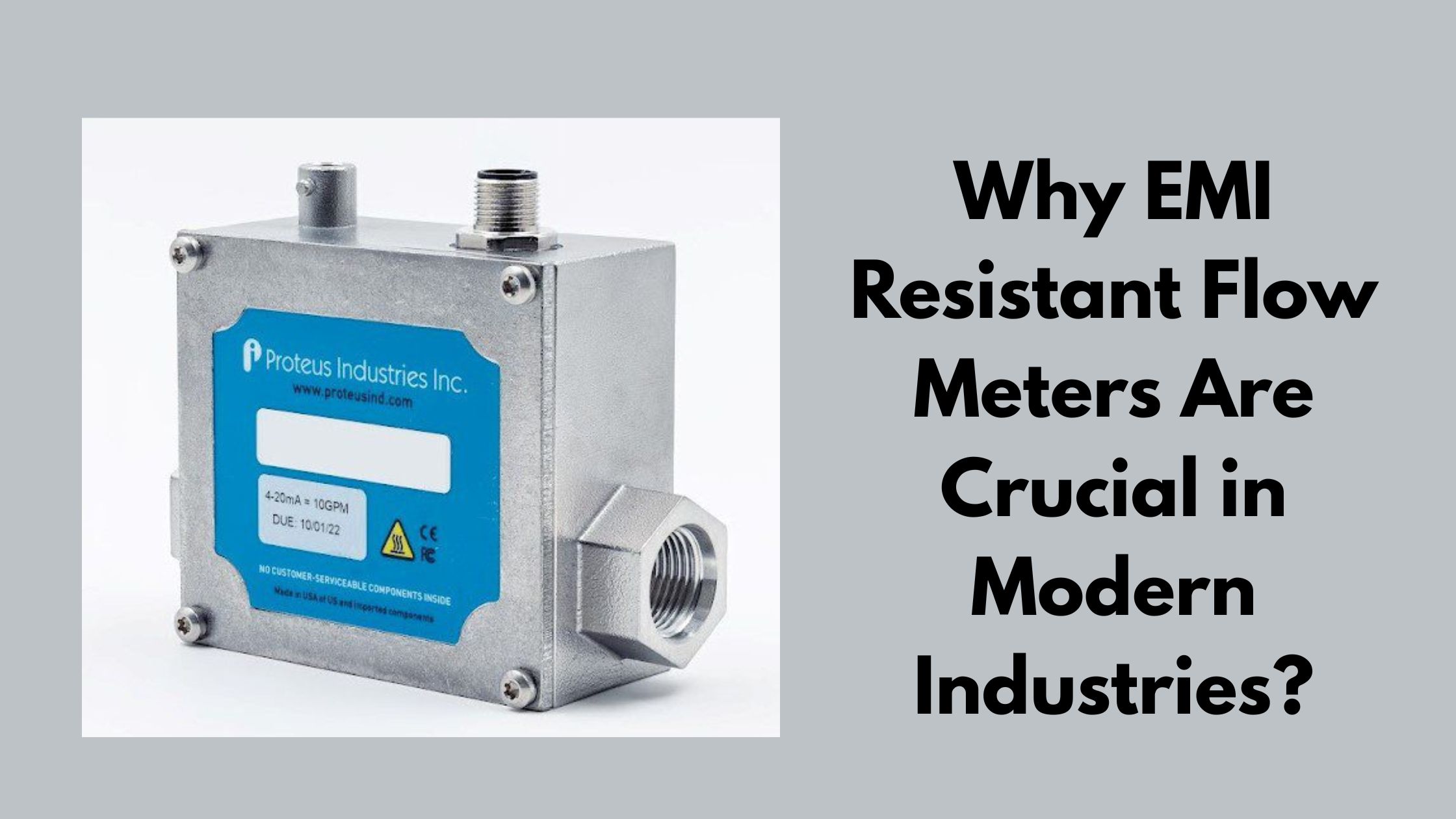Flow meters are essential tools in industrial processes, providing precise measurements of liquids and gases to ensure accuracy, safety, and efficiency. From oil and gas to food production, industries rely on these devices for smooth operations. However, in modern industrial environments, electromagnetic interference (EMI) has become a significant challenge. Motors, drives, and heavy machinery generate electromagnetic noise that can disrupt sensitive measurement systems, leading to inaccuracies. This is where the electromagnetic interference resistant flow meter plays a vital role. By effectively countering EMI, these advanced flow meters ensure reliable performance and maintain measurement integrity in even the most demanding environments.
Understanding EMI and Its Impact on Flow Measurement
Electromagnetic interference (EMI) refers to unwanted signals that disrupt the normal operation of electronic devices. In industrial settings, EMI often originates from motors, high-voltage power lines, variable frequency drives, welding equipment, and other heavy machinery. For conventional flow meters, such interference can distort readings, cause instability, or even lead to complete equipment failure. In industries where accuracy is non-negotiable, these disruptions can result in product loss, safety hazards, and costly downtime. Hence, addressing EMI is not just a matter of convenience—it is a critical requirement for consistent and precise flow measurement.
What Are EMI Resistant Flow Meters?
An electromagnetic interference resistant flow meter is a specialized device designed to maintain accurate performance even in environments with high levels of EMI. These flow meters incorporate shielding, advanced circuitry, and noise-filtering technologies to reject unwanted signals. Their design ensures that external electromagnetic noise does not compromise measurement accuracy. By combining robust engineering with smart design, these meters guarantee reliable readings in environments where standard flow meters would fail.
Benefits of EMI Resistant Flow Meters in Industry
Using an EMI resistant flow meter brings numerous benefits to industrial operations. First, they ensure accurate and stable measurements, which are vital for quality control and process optimisation. Second, they improve operational efficiency by minimising disruptions and reducing the need for frequent recalibration. Additionally, they help cut down downtime and prevent costly errors caused by inaccurate data. In sensitive applications like pharmaceuticals, power generation, or food processing, these devices also enhance safety and compliance. Ultimately, the adoption of electromagnetic interference-resistant flow meters translates into smoother operations and greater long-term savings.
Applications Across Industries
The versatility of EMI resistant flow meters makes them valuable across multiple sectors. In water and wastewater treatment, they provide reliable readings despite the presence of pumps and electrical systems that generate EMI. In chemical processing, they enhance safety by ensuring stable measurements of reactive fluids. The food and beverage industry also benefits, as consistent flow control ensures quality and compliance. Finally, in power generation, these meters maintain accuracy in environments with heavy electrical activity, preventing performance disruptions.
Choosing the Right EMI Resistant Flow Meter
Selecting the right electromagnetic interference resistant flow meter depends on the specific application and operating environment. Key factors include the type of fluid, pressure, temperature, and the level of EMI present in the facility. It’s also essential to choose meters from reputable manufacturers that comply with industrial standards and certifications. Features like advanced shielding, digital filtering, and robust construction should be prioritised. Investing in high-quality EMI resistant flow meters ensures long-term reliability, reduced maintenance, and better performance in EMI-heavy environments.
Future of Flow Measurement in EMI-Heavy Environments
The future of flow measurement lies in advanced, smart technologies. EMI resistant flow meters are evolving with innovations such as IoT integration, cloud-based monitoring, and predictive analytics. As industries move towards digitalisation and smart factories, the demand for EMI-resistant designs is expected to grow significantly. Trends also indicate the development of more compact, energy-efficient, and self-diagnosing meters that enhance accuracy while lowering operational costs. By combining EMI resistance with intelligent features, these next-generation flow meters are set to redefine industrial efficiency.
Conclusion
In today’s EMI-heavy industrial environments, precision in flow measurement cannot be compromised. The electromagnetic interference resistant flow meter provides a reliable solution by safeguarding accuracy, improving efficiency, and reducing risks associated with measurement errors. Its role spans across industries, from oil and gas to food processing, ensuring stable operations in challenging conditions. As technology advances, the adoption of EMI resistant flow meters will become increasingly essential for modern industries. Embracing this innovation is not just about addressing today’s challenges—it is a forward-looking step toward safer, smarter, and more efficient operations.

